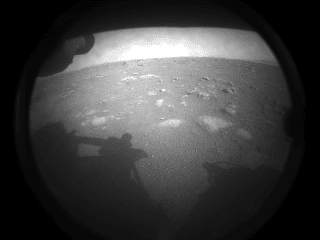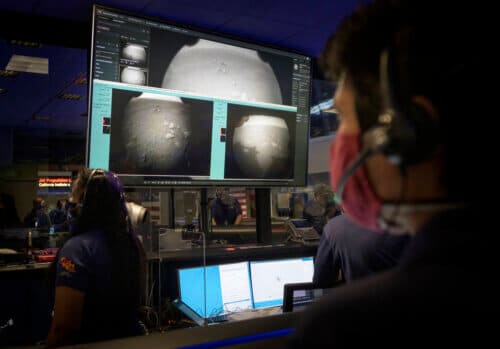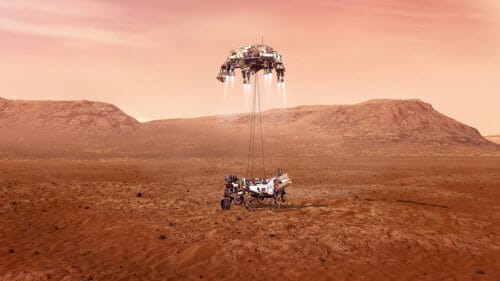The images, in low resolution, were taken by Persistence's road cameras and show the view near the landing area.

NASA's Persistence Rover that landed tonight on NASA's Mars has transmitted its first images from the surface of the red planet. The image comes from cameras designed to avoid dangers that the driver is likely to encounter during his travels, (Hazcams) and they also help with autonomous driving. The clear protective caps over these cameras still work. These first images are low-resolution versions or so-called “thumbnails”. Higher resolution versions will be available later.
The rover was launched as part of the Mars 2020 mission, from Cape Canaveral, Florida, on July 30, 2020, and as mentioned tonight, February 18, 2021, it landed.
The landing was successful, now for the scientific work
The key phases of the Mars 2020 mission were launch, cruise, arrival (entry, descent and landing), and what remains is to follow the field activity that is now starting. During an initial mission that will last one Martian year (about 687 Earth days), Preservation will explore the Jizerou Crater and engage in high-priority scientific objectives for the exploration of Mars. A key objective of the Mars persistence mission is Astrobiology , including a search for signs of ancient microbial life.

Preservers will also characterize the climate and geology of Mars, pave the way for human exploration of the Red Planet, and be the first planetary mission to collect and cache Martian rocks and regolith (broken rock and dust). A future spacecraft in the next decade will land and collect these samples for return to Earth.

The first drone on another planet
The Ingenuity Mars helicopter, which is attached to the belly of the rover, will be released from it and will perform tasks at sites far from the rover itself, will carry research packages to areas that the rover cannot reach, and will also photograph the path expected for the rover so that its autonomous driving system can move 200 meters a day.
The Persistence rover will be the ninth spacecraft of the US space agency to land on the Red Planet and the fifth rover. Along with characterizing the geology and climate of Mars, and paving the way for manned flights beyond the lunar orbit, the rover focuses on astrobiology, or the study of life throughout the universe. Persistence is charged with the search for clear signs that microbial life may have existed on Mars billions of years ago. It will collect rock core samples in metal tubes, and future missions will return these samples to Earth for further study.
"To quote Carl Sagan," said Gentry Lee, chief engineer for the director of planetary science at NASA's Jet Propulsion Laboratory, ""If we saw a hedgehog staring at the camera, we would know that there is contemporary and certainly ancient life on Mars, but based on From our past experiences, such an event is highly unlikely. Extraordinary claims require extraordinary evidence, and the discovery that life exists elsewhere in the universe would certainly be extraordinary. "
Last week they reached orbit around Mars Spaceship Hop of the United Arab Emirates, andThe Tianwan 1 spacecraft of the Chinese Space Agency. In the future, the Chinese are expected to land a lander from it and an all-terrain vehicle will take off from it, a complex operation for the country, which is its first landing mission on Mars.
More of the topic in Hayadan:

3 תגובות
The article about fragments does not have the option of writing a comment, probably because it is quoted from the Hebrew.
A free version of the probably interesting article
ב https://www.researchgate.net/publication/275279833_Recent_developments_in_dynamic_fracture_Some_perspectives
exciting. Maybe it will be possible to open a window to parallel worlds??? Or will it be pandora's box???
I wonder what else we will get to see in our lives. Fascinating times